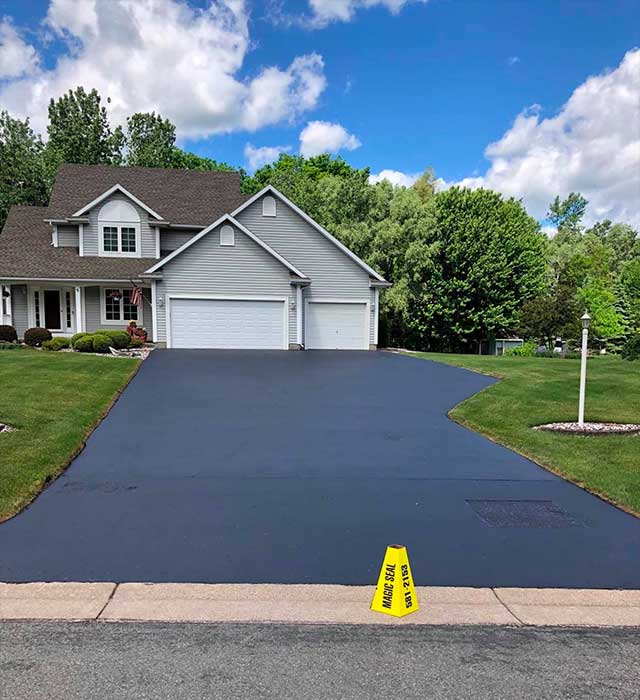Unlock the Tricks of Asphalt Sealing: Optimizing Warm Mix Asphalt Longevity
Unlock the Tricks of Asphalt Sealing: Optimizing Warm Mix Asphalt Longevity
Blog Article
Warm Mix Asphalt: A Lasting Solution for Sidewalk
Warm Mix Asphalt (HMA) has actually become a leading lasting selection for sidewalk remedies, supplying a myriad of innovative technologies and environmental advantages. Its capacity to reuse products and decrease energy usage presents a compelling instance for its fostering in roadway building and construction tasks. The long-lasting performance and sturdiness of HMA make it a favored choice for framework growth. As the need for green construction techniques grows, exploring the subtleties of HMA's sustainability can offer beneficial understandings right into the future of sidewalk options.
Ecological Benefits of Warm Mix Asphalt

Moreover, Hot Mix Asphalt assists to mitigate city warm island effects. Its dark color takes in sunshine, minimizing the amount of warm mirrored back into the ambience compared to lighter-colored sidewalks. This can decrease ambient temperatures in metropolitan locations, reducing the need for air conditioning and eventually lowering energy intake.
Furthermore, Hot Mix Asphalt adds to boosted stormwater monitoring. Its porous nature enables water to penetrate the sidewalk and reenergize groundwater materials, minimizing drainage and the threat of flooding. These ecological benefits make Hot Mix Asphalt a lasting option for leading roadways and freeways.
Energy Effectiveness in HMA Manufacturing
Is power performance a critical consider the production of Hot Mix Asphalt (HMA)? Absolutely. Energy plays a significant role in the production of HMA, impacting both cost and environmental sustainability. One key aspect of power performance in HMA manufacturing is making use of cozy mix asphalt (WMA) innovations (regrading). WMA permits the mixing and placement of asphalt at lower temperature levels contrasted to standard hot mix asphalt, leading to decreased energy intake throughout manufacturing. This process not only decreases gas use however also lowers greenhouse gas exhausts, making it an extra ecologically friendly option.
Additionally, advancements in plant modern technologies have led to even more energy-efficient HMA production procedures. Modern plants are created with features like recycled asphalt sidewalk (RAP) processing capacities, effective burner systems, and enhanced insulation, all contributing to power cost savings. By maximizing energy use in HMA production, the sector can lower its carbon footprint while keeping high-quality sidewalk products. Energy performance is, for that reason, an essential factor to consider in guaranteeing the sustainability of Warm Mix Asphalt production.
Recyclability of Hot Mix Asphalt
The recyclability of Hot Mix Asphalt (HMA) is an essential facet of its sustainability and long-term environmental influence. HMA is just one of the most recycled materials in the United States, with over 100 million lots of reclaimed asphalt pavement (RAP) being recycled each year in brand-new pavement building. Recycling HMA supplies several environmental benefits, such as decreasing the need for virgin products, decreasing energy usage during production, and reducing the quantity of waste sent out to land fills.
The process of recycling HMA involves milling the existing pavement, crushing it into smaller pieces, and mixing it with new aggregate and asphalt binder to produce a recycled mix. This recycled mix can usually perform as well as and even much better than traditional HMA, while needing less resources and creating lower greenhouse gas discharges. By integrating RAP right into new sidewalk jobs, roadway companies can save natural deposits, decrease costs, and lessen the ecological footprint of road building and construction and upkeep tasks. In general, the recyclability of HMA plays a substantial duty in advertising sustainable practices within the sidewalk market.

Long-Term Performance of HMA
Asphalt pavements demonstrate longevity and resilience over an extended period, reflecting the long-lasting efficiency of Warm Mix Asphalt (HMA) The long life of HMA can be credited to its capacity to withstand heavy website traffic lots, rough climate condition, and the results of aging. Researches have actually revealed that properly designed and appropriately created HMA sidewalks can last for twenty years or more with regular maintenance. The key to optimizing the long-lasting performance of HMA depends on using top quality materials, adhering to ideal methods in building and construction, and applying reliable upkeep methods. Appropriate drain, routine assessments, and timely repair services are vital for protecting the structural integrity of HMA sidewalks with time. Additionally, advancements in HMA modern technology, such as using polymer-modified binders and warm mix asphalt, have actually additionally enhanced the resilience and durability of HMA sidewalks. By focusing on high quality building and upkeep methods, HMA continues to confirm itself as a cost-efficient and sustainable solution for resilient pavement facilities.

HMA: Toughness and Sustainability
Demonstrating both resilience and sustainability, Warm Mix Asphalt (HMA) has become a keystone in the building and construction of resilient pavement frameworks - angled parking. HMA's durability originates from its capacity to stand up to heavy loads, extreme climate condition, and high web traffic volumes, making it a reliable selection for streets, freeways, and airport paths. The structure of HMA, which generally consists of aggregates, binder, and filler, plays a crucial function in enhancing its long life and resistance to deterioration
Additionally, HMA's sustainability lies in its recyclability and energy-efficient production procedure. The ability to recycle redeemed asphalt pavement (RAP) in new HMA combinations decreases the need for virgin products and minimizes the environmental influence of sidewalk construction and upkeep. Additionally, the energy efficiency of creating HMA hinges on its lower mixing temperatures contrasted to various other sidewalk products, resulting in minimized power intake and greenhouse gas emissions.
Conclusion
To conclude, hot mix asphalt (HMA) provides a sustainable option for sidewalk with its eco pleasant characteristics. HMA's recyclability, energy efficiency in production, and long-term toughness make it find out here now an eco-friendly check out this site choice for road construction. By conserving natural deposits, decreasing waste, and lowering greenhouse gas emissions, HMA plays an essential role in promoting sustainability in infrastructure development. Its ability to mitigate urban warmth island results further underscores its importance in creating resistant and eco mindful sidewalk systems.
HMA is one of the most recycled products in the United States, with over 100 million heaps of recovered asphalt pavement (RAP) being reused each year in new pavement building and construction.The process of recycling HMA entails grating the existing pavement, squashing it into smaller items, and blending it with new accumulation and asphalt binder to produce a recycled mix.Asphalt pavements show toughness and resilience over an extensive period, reflecting the lasting performance of Warm Mix Asphalt (HMA) Furthermore, advancements in HMA modern technology, such as the use of polymer-modified binders and cozy mix asphalt, have better improved the check out here resilience and durability of HMA sidewalks. The ability to reuse recovered asphalt sidewalk (RAP) in new HMA mixtures decreases the need for virgin materials and decreases the environmental effect of sidewalk building and upkeep.
Report this page